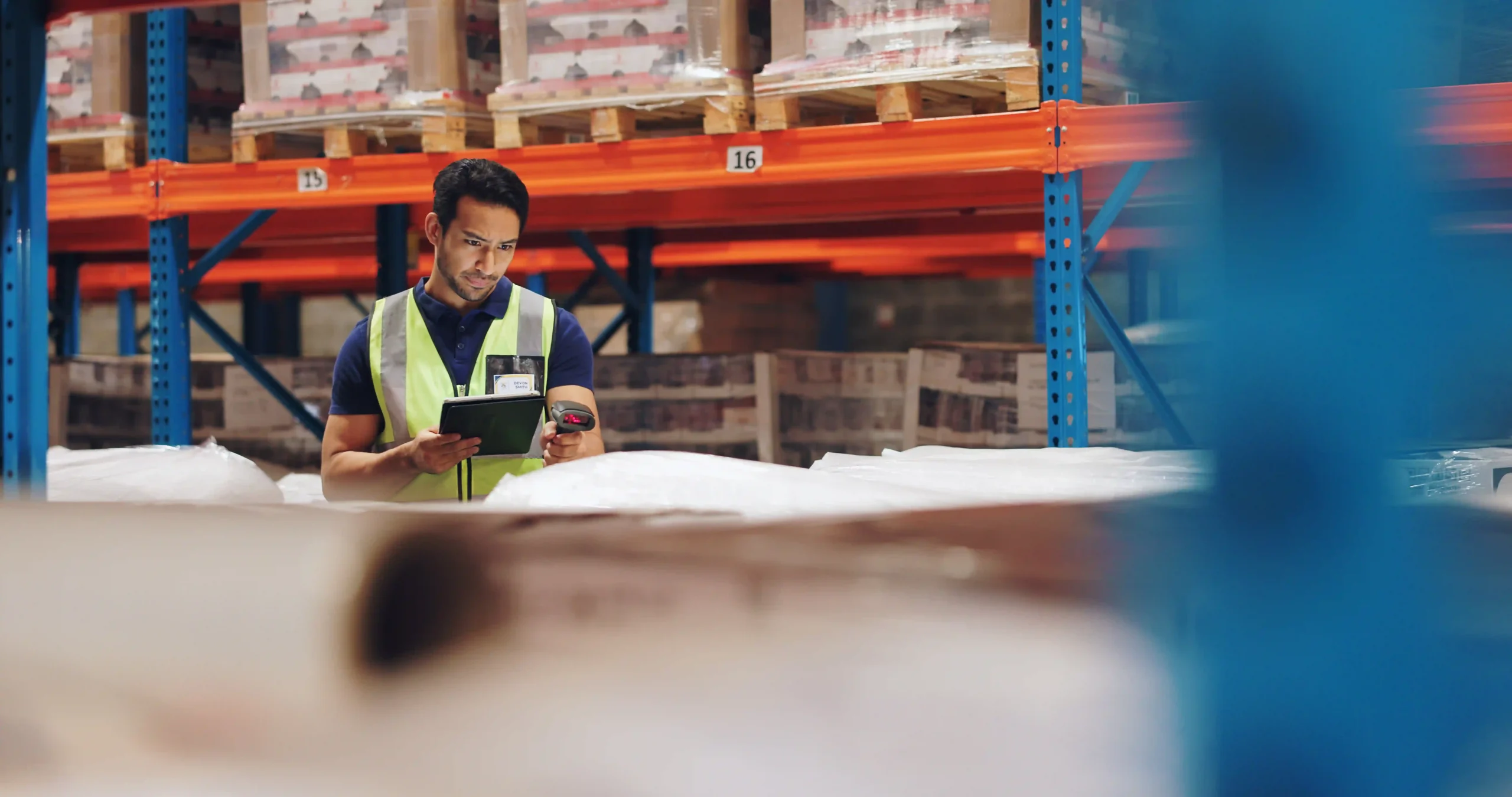At its core, supply chain visibility and optimization refers to the ability to track goods from raw materials to the final destination while using data and technology to improve efficiency. It’s about knowing where your products are, how they’re moving, and what’s affecting their journey.
This allows businesses to make real-time decisions, minimize disruptions, and ensure smooth operations. In today’s interconnected world, supply chains are more complex than ever.
A single product might pass through multiple suppliers, manufacturers, warehouses, and shipping providers before reaching the customer. Without visibility, inefficiencies, delays, and unexpected costs creep in.
That’s why supply chain optimization is not just an advantage—it’s a necessity for survival in competitive industries. At Tri-Link FTZ, we’ve spent over three decades helping businesses transform their supply chains.
We know what works, what doesn’t, and how to avoid costly mistakes. Companies that ignore supply chain visibility often find themselves stuck in reactive mode—scrambling to fix issues after they happen.
But those that invest in optimization can proactively prevent disruptions, save money, and increase customer satisfaction.

Supply chains have evolved dramatically over the last few decades. Gone are the days of linear supply chains, where goods moved in a predictable pattern from Point A to Point B.
Today, supply chains function as intricate networks, involving multiple stakeholders, data streams, and global regulations. Without visibility, companies lose control over their own operations, leading to financial losses and reputational damage.
One of the biggest benefits of supply chain visibility and optimization is the ability to anticipate and respond to potential disruptions. For example, a manufacturer relying on overseas suppliers needs real-time data on shipments.
If a delay occurs due to bad weather, labor strikes, or customs clearance issues, that manufacturer must have the flexibility to reroute shipments, adjust inventory levels, or notify customers about changes. Another key reason visibility is essential is cost reduction.
Supply chains that lack transparency often suffer from excess inventory, inefficient transportation routes, and supply-demand mismatches. A business that automates inventory tracking and integrates AI-powered forecasting can significantly cut costs by only ordering what it needs and preventing overstocking or stockouts.
For Tri-Link FTZ, visibility has been the backbone of our logistics strategy. We work with clients in various industries—from retail and e-commerce to automotive and healthcare—to ensure their supply chains operate smoothly.
By leveraging real-time tracking tools, automated reporting, and AI-driven analytics, we help companies stay ahead of disruptions, improve efficiency, and deliver goods faster and more reliably.
Optimization is all about making your supply chain smarter, faster, and more cost-effective. This is achieved by integrating technology, streamlining workflows, and ensuring seamless communication between all stakeholders.
One major way supply chain visibility and optimization reduces costs is by eliminating waste. Inefficiencies such as delayed shipments, excess inventory, and poor supplier coordination create unnecessary expenses.
Companies that analyze their supply chain data can pinpoint problem areas and implement targeted solutions. For example, businesses that use predictive analytics can forecast demand more accurately, reducing the risk of over-ordering products that won’t sell.
A company that ships perishable goods, such as fresh produce or pharmaceuticals, can track temperature-sensitive shipments in real time, ensuring products reach customers before they expire.
Factor | How It Reduces Costs |
Real-Time Tracking | Prevents lost shipments and theft. |
Inventory Management | Reduces overstocking and stockouts. |
AI-Powered Forecasting | Improves demand planning and minimizes excess production. |
Route Optimization | Cuts fuel costs and shortens delivery times. |
Automation | Reduces manual errors and labor costs. |
At Tri-Link FTZ, we’ve seen firsthand how businesses save money by optimizing supply chain operations. By integrating AI-powered tracking systems, cloud-based logistics platforms, and supplier performance monitoring, our clients have reduced costs by up to 30% while increasing delivery speed and customer satisfaction.

While the benefits of supply chain visibility are clear, achieving it isn’t always easy. Many businesses struggle with disconnected systems, outdated technology, and resistance to change.
Below are some of the most common challenges:
One of the biggest obstacles is data silos. Many companies operate with separate systems for inventory, shipping, and customer orders.
These fragmented platforms don’t communicate with each other, making it difficult to track products across the supply chain. A unified data management system is essential for achieving full visibility.
Another major challenge is the lack of integration with suppliers and logistics providers. Businesses rely on third-party carriers, freight brokers, and warehouse operators, but if these partners don’t provide real-time updates, visibility is compromised.
Companies must ensure supply chain partners use compatible tracking systems that allow seamless data sharing. Companies also face real-time tracking gaps.
Many businesses rely on manual tracking or outdated barcode systems, which fail to provide instant updates on shipment status. Investing in IoT sensors, GPS tracking, and RFID technology can dramatically improve visibility.
Additionally, regulatory compliance creates challenges, especially for businesses operating in multiple countries. Customs regulations, trade restrictions, and environmental policies affect supply chain efficiency.
Without real-time tracking and automated compliance monitoring, businesses risk delays, penalties, or lost shipments. Lastly, cybersecurity risks are a growing concern.
The more data companies collect, the more they become targets for cyber threats. Hacking, ransomware, and data breaches can disrupt supply chains and expose sensitive information.
Implementing strong cybersecurity measures is critical for maintaining supply chain integrity. At Tri-Link FTZ, we help companies overcome these obstacles by integrating cloud-based SCM solutions, enhancing supplier collaboration, and automating compliance tracking.
By addressing these challenges, businesses can achieve true supply chain visibility and maintain a competitive edge.
Many businesses struggle with gaps in visibility, whether from data silos, outdated tracking systems, or lack of integration with supply chain partners. However, these challenges can be solved with strategic technology adoption and process improvements.
One of the most effective ways to improve visibility is by implementing AI-driven data integration platforms. These platforms connect various supply chain systems, ensuring that inventory, shipping, and supplier data are all unified in one place.
This eliminates fragmented systems and allows real-time tracking across the entire supply chain. Another crucial step is leveraging IoT-enabled tracking devices.
Businesses that adopt GPS tracking, RFID tags, and IoT sensors can monitor shipments and warehouse inventory in real time. This reduces the risk of lost goods, improves shipment arrival predictions, and helps optimize logistics efficiency.
Companies should also prioritize supplier collaboration by ensuring that all vendors, manufacturers, and logistics providers use compatible tracking and reporting systems. A business can’t achieve full visibility if its partners are still using manual tracking or outdated spreadsheets.
Cloud-based SCM platforms allow seamless data sharing and improve coordination between all supply chain stakeholders. Process standardization is another key factor.
Many companies struggle with inconsistent workflows, leading to inefficiencies and delays. By standardizing procedures, such as inventory management, order processing, and transportation planning, businesses can reduce errors and improve supply chain predictability.
Lastly, investing in employee training and digital adoption ensures that businesses can fully utilize the technology they implement. Many companies invest in advanced software but fail to train their teams on how to use it effectively.
Without proper training, supply chain visibility tools won’t reach their full potential. At Tri-Link FTZ, we’ve helped businesses integrate advanced visibility solutions, streamline logistics, and improve data sharing.
By following these best practices, companies can enhance efficiency, reduce costs, and create a more resilient supply chain.
Technology is the driving force behind modern supply chain optimization. Businesses that embrace innovation gain a competitive advantage, reducing delays and improving decision-making.
IoT (Internet of Things) sensors play a major role in visibility by tracking shipments, monitoring storage conditions, and providing real-time data on logistics performance. For example, companies transporting temperature-sensitive goods, such as pharmaceuticals or food, use IoT sensors to ensure products remain within safe temperature ranges throughout transit.
AI (Artificial Intelligence) and machine learning are also transforming supply chains by analyzing large datasets and predicting potential issues before they occur. AI-powered demand forecasting helps businesses adjust inventory levels based on real-time market trends, reducing both shortages and overstocking.
AI also helps with route optimization, ensuring goods are shipped in the most efficient way possible. Blockchain technology is another game-changer in supply chain transparency.
It allows businesses to create secure, tamper-proof digital records of transactions, which helps with tracking product origins, verifying supplier integrity, and preventing fraud. Many companies, especially in industries like pharmaceuticals, electronics, and luxury goods, use blockchain to prevent counterfeiting and improve regulatory compliance.
At Tri-Link FTZ, we’ve worked with companies implementing IoT tracking, AI-powered analytics, and blockchain for supply chain security. These technologies ensure that businesses can track their products, predict risks, and optimize operations with confidence.

Predictive analytics is one of the most valuable tools for supply chain visibility and optimization. Instead of reacting to disruptions after they happen, businesses that use predictive analytics can anticipate and prevent them.
For example, if a company tracks weather patterns and sees a major storm approaching a shipping route, predictive analytics can suggest alternative transportation options before the disruption causes delays. This proactive approach prevents shipment bottlenecks and keeps supply chains running smoothly.
Real-time data also plays a huge role in reducing inefficiencies. Businesses using live tracking software can monitor the exact location of shipments, warehouse inventory levels, and supplier performance.
This allows companies to make informed decisions instantly, rather than waiting for manual reports. Key Benefits of Real-Time Data & Predictive Analytics:
At Tri-Link FTZ, we use AI-powered analytics to help clients forecast demand, track supplier reliability, and improve warehouse efficiency. Businesses that leverage predictive analytics gain a significant edge over competitors, ensuring their supply chains run smoothly—even in unpredictable environments.
Cloud-based supply chain management (SCM) platforms have revolutionized logistics by centralizing data and improving collaboration. Businesses that use cloud solutions can monitor supply chain activity from any device, at any time, giving them full visibility into their operations.
One major advantage of cloud SCM is seamless integration. Many companies struggle with multiple disconnected systems, making it hard to track inventory, shipments, and orders.
Cloud-based platforms bring all data into one centralized location, allowing companies to view their supply chain in real-time. Cloud solutions also reduce IT costs by eliminating the need for expensive on-premise servers and software updates.
Instead of managing infrastructure internally, businesses can access cutting-edge tools without large upfront investments. At Tri-Link FTZ, we’ve helped companies adopt cloud-based SCM solutions, improving their ability to track inventory, communicate with suppliers, and optimize logistics.
Businesses that switch to cloud SCM experience faster decision-making, lower costs, and improved supply chain reliability.
To measure the success of supply chain visibility and optimization, businesses must track key performance indicators (KPIs). These metrics help companies identify strengths, weaknesses, and opportunities for improvement.
KPI | Why It Matters |
On-Time Delivery Rate | Measures how efficiently goods reach customers. |
Inventory Turnover Ratio | Prevents overstocking and minimizes holding costs. |
Order Accuracy Rate | Ensures customer satisfaction and prevents returns. |
Supply Chain Cost Per Order | Tracks operational efficiency and cost control. |
Supplier Performance Metrics | Evaluates the reliability of vendors. |
At Tri-Link FTZ, we use these KPIs to help clients refine their supply chain strategies. Businesses that actively track and adjust their KPIs experience higher profits, fewer disruptions, and better operational performance.

Supply chain technology is constantly evolving. The next decade will bring even greater advancements, making supply chains smarter, faster, and more resilient.
One major trend is the rise of autonomous supply chains. AI and robotics will automate inventory management, warehouse operations, and order fulfillment, reducing human error and increasing efficiency.
Another trend is the growing importance of ESG (Environmental, Social, and Governance) tracking. Companies will need greater transparency in supply chain sustainability, ensuring their sourcing and logistics meet ethical and environmental standards.
Additionally, the adoption of digital twins—virtual models of supply chains—will allow businesses to test and refine operations in a simulated environment before making real-world changes. At Tri-Link FTZ, we stay ahead of these trends to help businesses adopt next-generation supply chain solutions.
Companies that invest in these innovations will be better prepared for the future, ensuring long-term success in an increasingly competitive market.
It’s easy to talk about supply chain visibility and optimization, but real success stories prove just how impactful these strategies can be. Companies across industries—retail, healthcare, automotive, and more—have transformed their supply chains through real-time tracking, predictive analytics, and automation.
A leading global retailer was struggling with overstocking, frequent stockouts, and supply chain delays due to inconsistent demand forecasting. By implementing AI-driven predictive analytics and real-time inventory tracking, the company reduced overstock by 30%, cut supply chain costs, and improved product availability.
An online retailer faced customer complaints due to unpredictable delivery times. They introduced IoT-based shipment tracking, which allowed them to optimize delivery routes and reduce late shipments by 40%.
A pharmaceutical company needed a secure, tamper-proof way to track medical supply shipments. By using blockchain technology, they gained end-to-end visibility, preventing counterfeit drugs from entering their supply chain and improving compliance with global regulatory standards.
At Tri-Link FTZ, we’ve helped companies achieve similar results by implementing customized supply chain visibility solutions, ensuring they stay efficient, cost-effective, and resilient in an unpredictable world.
For businesses looking to improve their supply chain visibility and optimization, the process may seem overwhelming. However, getting started can be simple if companies take it step by step.
The first step is conducting a supply chain audit. This means evaluating how well current tracking systems work, identifying blind spots, and pinpointing inefficiencies.
Many businesses don’t realize just how much they’re losing due to poor visibility until they examine their supply chain data. The second step is investing in real-time tracking technology.
Whether it’s IoT sensors, GPS tracking, or RFID systems, businesses need accurate, live data on their shipments, inventory, and warehouse operations. The third step is integrating cloud-based SCM platforms.
These platforms allow businesses to access all their supply chain data in one place, breaking down data silos and improving coordination with suppliers, manufacturers, and logistics providers. The fourth step is leveraging AI and automation.
AI-powered forecasting can reduce waste, prevent disruptions, and optimize shipping routes, ensuring that businesses don’t overpay for storage or transportation.
Finally, the fifth step is tracking KPIs and continuously optimizing. Supply chains must be monitored, adjusted, and improved based on real-time performance data.
Businesses should regularly track on-time delivery rates, inventory turnover, order accuracy, and logistics costs to identify areas for further improvement. At Tri-Link FTZ, we help businesses implement these strategies with customized logistics solutions, expert guidance, and advanced technology integration.
Our 35 years of experience in third-party logistics and foreign trade zone services allow us to create supply chain solutions that deliver real results.
Supply chain visibility and optimization are no longer optional—they’re essential for long-term business success. Companies that fail to adapt and improve their logistics operations risk falling behind, losing customers, and incurring unnecessary costs.
By embracing real-time tracking, AI-driven analytics, and cloud-based SCM solutions, businesses can enhance efficiency, reduce waste, and improve supply chain resilience. Technologies like IoT, blockchain, and predictive analytics are shaping the future of logistics, making supply chains smarter, faster, and more secure.
At Tri-Link FTZ, we’ve spent decades helping businesses transform their supply chains. From small startups to global enterprises, our clients have achieved lower costs, faster delivery times, and stronger supply chain control by adopting the right technology and strategies.
If your business is ready to gain full visibility, optimize logistics, and future-proof operations, Tri-Link FTZ is here to help. Contact us today to discover how we can improve your supply chain strategy and drive long-term success.
Share this article
We have other resources available upon request as well as one-on-one support and personalized answers, just like our services.
Simply contact us anytime and we’ll get back to you to answer your questions and provide meaningful answers that show you how Tri-Link supports your logistics, reduces costs, and accelerates efficiency.
Tri-Link delivers exceptional FTZ and 3PL services tailored to your global trade needs.
Our solutions combine innovation, quality, and efficiency to exceed your expectations and meet your specific requirements.